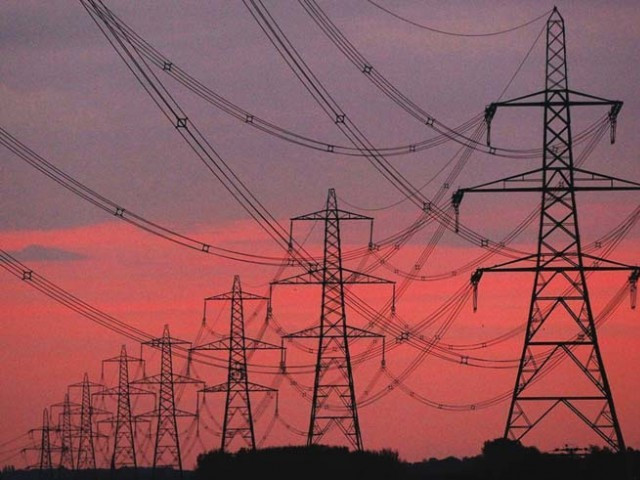Beating others, KE reduces T&D losses substantially
Receivables of distribution companies stood at Rs729.88b at the end of June 2017

Nepra report pointed out that generation companies had low utilisation levels and were operated in a standby mode, where they incurred costs without contributing energy to the national grid. PHOTO: FILE
In its State of Industry Report 2017, Nepra suggested that circular debt had been a major challenge as transmission and distribution (T&D) losses of distribution companies exceeded the targets.
Average T&D loss target for financial year 2016-17 was 15.27% at the national level, excluding K-Electric, whereas the distribution companies reported losses of around 17.9%.
The gap of around 2.6 percentage points resulted in an annual shortfall of over Rs31 billion, including the impact of monthly fuel cost adjustment.
The low recovery of consumer bills also added to the circular debt. Nepra had set a 100% recovery target while determining consumer tariffs for distribution companies, but actual recoveries for FY17 came in at around 92%.
The impact of lower recoveries of bills including excise duty, income tax, sales tax, fuel adjustment surcharge, additional surcharge, late payment surcharge, etc, resulted in an annual shortfall of around Rs81 billion, said the Nepra report.
Overall receivables of distribution companies increased Rs45.82 billion, but they were considerably less than the rise of Rs50.94 billion in 2015-16.
On June 30, 2017, the distribution sector’s receivables stood at Rs729.88 billion whereas the receivables at the start of the financial year were Rs684.06 billion.
K-Electric expects lower tariff after LNG use in plants
According to the report, the consumers were paying more in capacity payments. An analysis suggested that capacity payments, which were around Rs280 billion in FY16, crossed Rs350 billion in FY17 and would be close to Rs490 billion in FY18.
Following addition of new power plants, the capacity cost per unit of energy sold, which was slightly higher than Rs3.4 in FY16, reached around Rs4.1 in FY17, an increase of Rs0.7 per unit with a 6.2% growth in energy sold.
For the first six months of FY18, a year-on-year growth of about 12.31% in energy sold had been recorded. It was, however, noted that the growth rate would not be enough to keep the capacity cost at the same level - Rs4.1 per unit - and the expected cost would be close to Rs5 per unit.
CCOP again fails to develop consensus on K-Electric’s sale
As a whole, power generation companies continued to operate at a very low efficiency, mostly on expensive furnace oil. It was noted that these plants were not being operated according to prudent utility practices.
The Nepra report pointed out that generation companies had low utilisation levels and were operated in a standby mode, where they incurred costs without contributing energy to the national grid as they were ranked very low in the merit order.
In FY17, about Rs39 billion was paid to the generation companies on account of capacity payments while around Rs156 billion was given on account of energy payments.
Nepra urged the Ministry of Energy (Power Division) to phase out these facilities in view of their inefficient and uneconomical role in the sector.
“Due to their high operating costs, some of these plants may be totally closed down, even if their capacity costs are continued to be paid, to minimise economic loss to the sector,” it said.
Total installed power generation capacity in the country stood at 28,399 megawatts on June 30, 2017 compared to 25,421MW at the same time a year ago, an increase of 2,978MW or 11.71%.
Among all distribution companies, K-Electric showed a remarkable improvement in T&D losses from 35.9% in 2009 to 21.7% in 2017 whereas average losses of other companies went up 1.3 percentage points.
Top court reproaches K-E for prolonged load-shedding
In the same period, K-Electric managed to reduce its aggregate technical and commercial (AT&C) losses by 13.7 percentage points, far higher than the 3.8-percentage-point loss reduction by other distribution companies.
“Both these factors further establish the fact that privatisation is the key to achieving effective governance in the overall power distribution landscape for the benefit of end-consumers and this will also ensure the government does not have to fund state-run distribution companies for their inefficiencies,” the report said.
Published in The Express Tribune, July 31st, 2018.
Like Business on Facebook, follow @TribuneBiz on Twitter to stay informed and join in the conversation.



















COMMENTS
Comments are moderated and generally will be posted if they are on-topic and not abusive.
For more information, please see our Comments FAQ